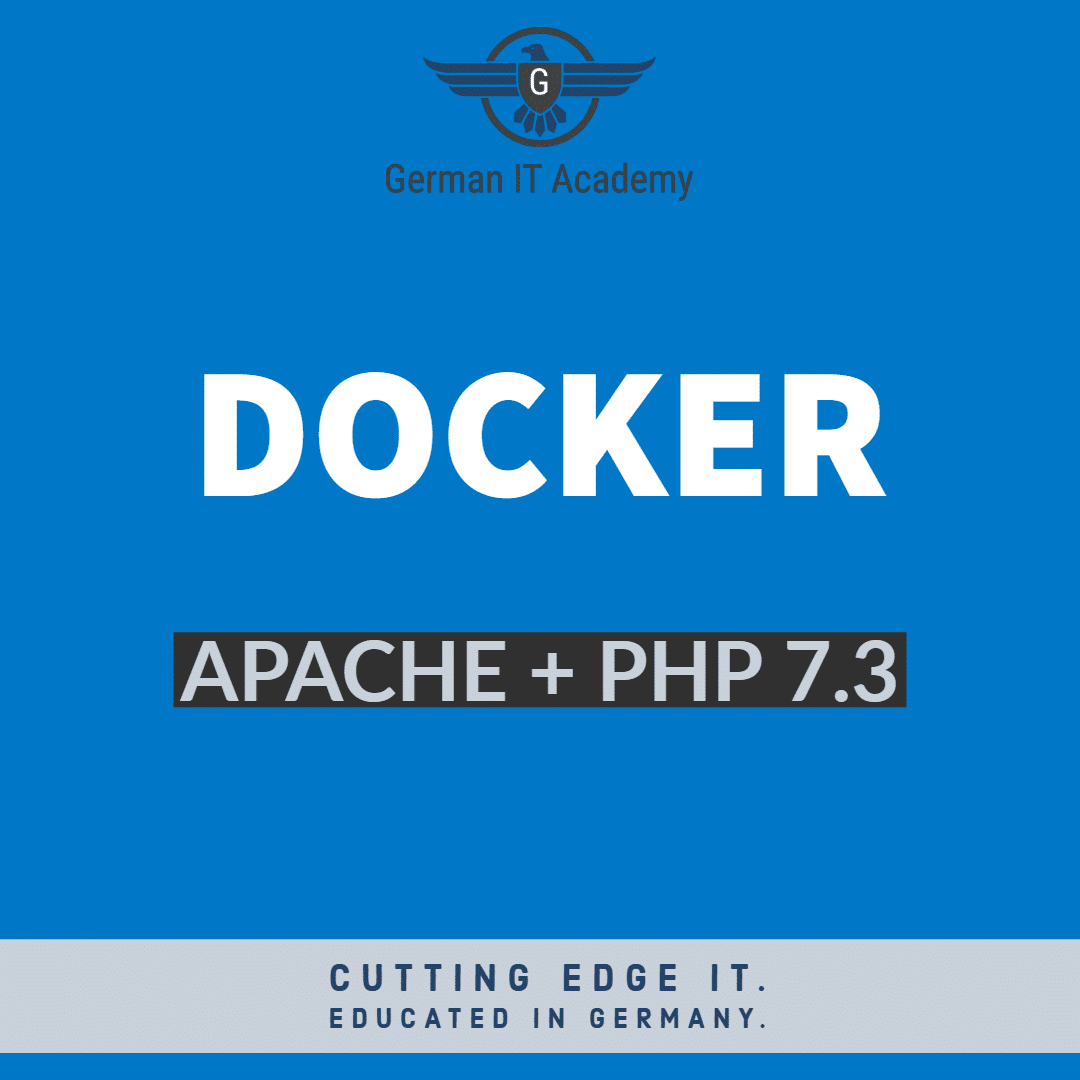-
 Moodle with Docker29,00 €
Moodle with Docker29,00 €
In this tutorial we are going to have a Moodle Instance up and running on a Virtual Machine – inside Docker Containers.
First of all, install and get Docker up and running. Then, download Moodle or make sure you have a Git-Repository ready at hand. We are going to use docker-compose for this task. Now let’s try and Run Moodle with Docker.
Moodle with Docker
We need a container that will have all the needed technology to run and serve the Moodle source code (your repository). This configuration will come from an Image, that we will use and configure through a docker-compose.yml file. Create a file docker-compose.yml and insert the version of docker-compose syntax that we are going to use:
version: "3.3"These Technologies are needed:
- Moodle Container
- Operating System (Ubuntu)
- Server (Apache2, Nginx)
- PHP7.x (incl. php-curl, php-mysql, etc.)
- Database Container
- MariaDB 10+
Database Docker Image
We are going to use a simple and straightforward solution from bitnami. We simple create a service that will use this image, and set some parameters like username, db_name, etc.
services:
mariadb:
image: "bitnami/mariadb:10.1"
networks:
- moodle-net
environment:
- MARIADB_USER=bn_moodle
- MARIADB_DATABASE=bitnami_moodle
- ALLOW_EMPTY_PASSWORD=yes
volumes:
- type: bind
source: /home/maria_data
target: /bitnami
ports:
- "3306:3306"We call our service ‚mariadb‘, expose some ports (3306) and bind a volume to persist our data on our host machine. We also attach ‚mariadb‘ to a network moodle-net. Also, make sure that docker can read/write the /home/maria_data folder on your host. We set rwx access for now (which is not recommended), please make sure to set the proper rights.
sudo chmod a+rwx /home/maria_data/Server Docker Image
There are already built images for these technologies: webdevops/php-apache:7.3 & bitnami/mariadb.
Let’s pull and test the PHP & Apache image first.
#Download
docker pull webdevops/php-apache:7.3
# Run Image (Copy image ID. 'docker images')
docker run -d -p 80:80 efec3d223189Now navigate to localhost or your public IP Address. You should see an empty Apache2 page.

This page is the result of the file ‚index.php‘ in container in folder /app. Worked fine. To use this image as a service in our config file, we need to create a new service in docker-compose.yml.
moodle:
image: "webdevops/php-apache:7.3"
networks:
- moodle-net
environment:
- MOODLE_DBHOST=mariadb
- MOODLE_DBPORT=3306
- MOODLE_DBUSER=bn_moodle
- MOODLE_DBPASS=''
- MOODLE_DBNAME=bitnami_moodle
ports:
- "80:80"
- "443:443"
volumes:
- type: bind
source: /home/moodle_data
target: /moodledata/moodledata
- type: bind
source: /home/gita-moodle
target: /app
depends_on:
- mariadb[et_bloom_inline optin_id=“optin_5″]
We specify the image that we tested previously. Specify the network to be same as the network of mariadb container. The Env Vars that we define, will be used by moodle in config.php. We open ports and specify the volumes. We make sure that moodle container only starts after mariadb container is up with the depends_on option. Make sure /home/moodle_data is writable.
sudo chmod a+rwx /home/moodle_data/Before we continue, in these courses you can learn how to create backend and frontend application. Both of which you can easily deploy and serve with Docker. And now you know how to use docker-compose. Expand your skill-set with these courses.
Finish line
At last, we need to define our network and volumes:
networks:
moodle-net:
driver: bridge
volumes:
mariadb_data:
driver: local
moodle_data:
driver: localNow let’s boot up these containers with and visit localhost or your public ip.
docker-compose up -dYou should see the installation process. Enter your Database data (see ENV VARS in MariaDB Service. After that a config.php file will be created. If not, copy the code and create a config.php file in root folder.

After finishing up the setup process of moodle, you’ll finally see your ready working moodle instance. Now you run Moodle with Docker Containers.

After setting up moodle. Your host volumes/folders will be filled with data that comes from containers. E.g. moodle population a predefined folder structure in moodle_data.
ls moodle_data/
cache filedir lang localcache lock moodle muc sessions temp trashdirSame, and more importantly, applies to mariadb container. Our Database is now persisted on our host machine.
/home/maria_data/mariadb/data# pwd
/home/maria_data/mariadb/data
/home/maria_data/mariadb/data# ls
aria_log.00000001 aria_log_control bitnami_moodle ibdata1 ib_logfile0 ib_logfile1 multi-master.info mysql mysql_upgrade_info performance_schema tc.log test[pods name=“coach“ slug=“714″ template=“Coach Template“]








Thanks for the TUt. I tried to make it work with Nginx but failed. Do you know how to fix it?
Thanks. First of all i’d need to know what error you are getting.